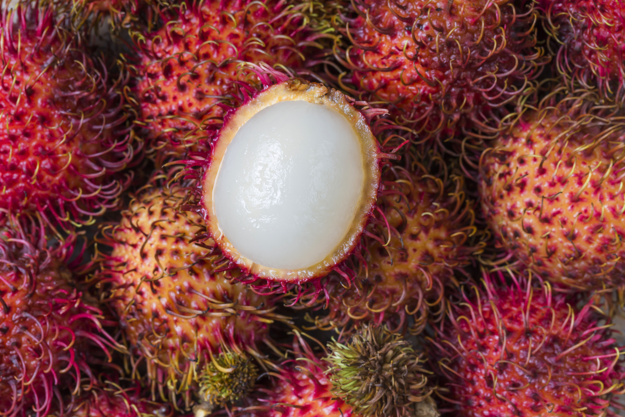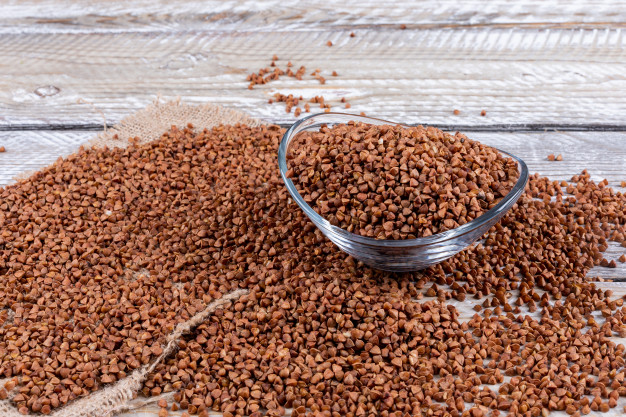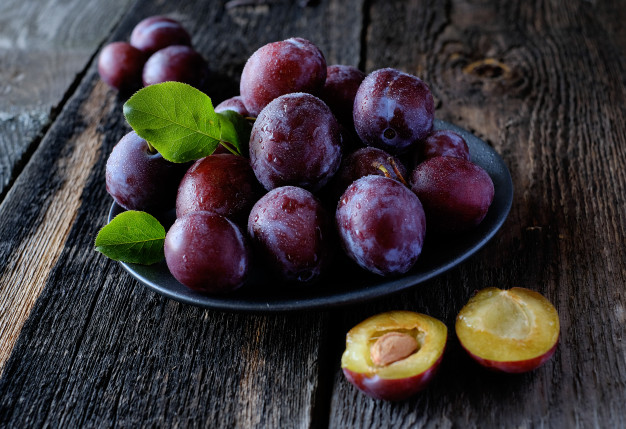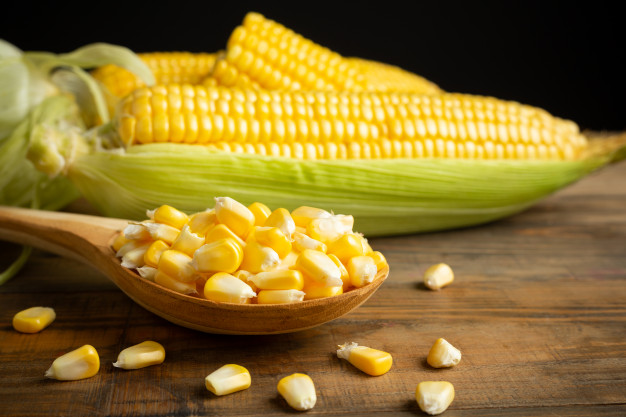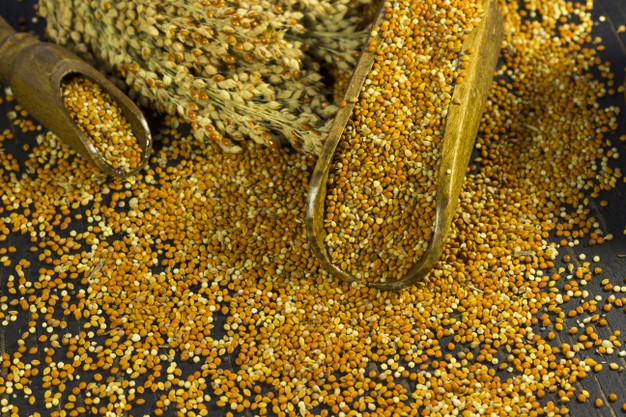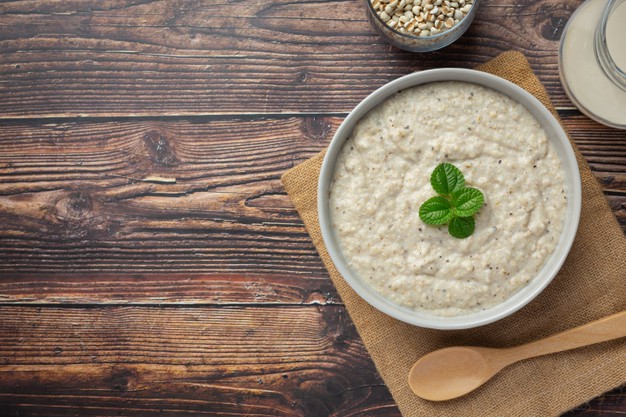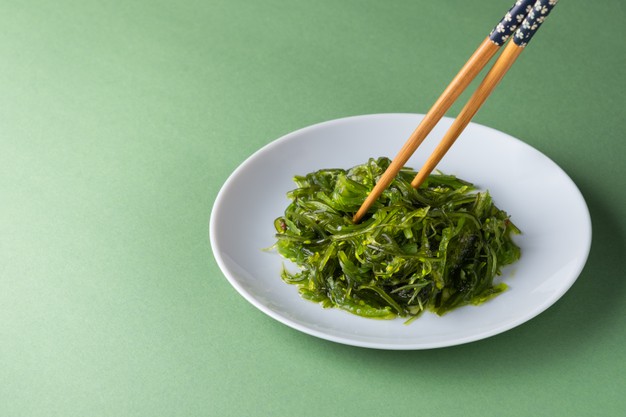Rambutan is a nutritious fruit belongs to Sapindaceae family. It is native to Southeast Asia. In native language the word rambutan means hair this is why the name of the fruit is coined as the fruit contains various hairy protrusions all over. It is packed with vatious nutrients that offer numerous health benefits.
Difference between Rambutan and Lychee
Rambutan is closely related with lychee (a tropical fruit) but they are not same fruits. They differ in various ways, like –
- Size of lychee is relatively smaller than rambutan
- Rambutan has reddish outer skin and also contains yellowish green spikes all over, whereas the outer skin of lychee is also reddish in color but lychee does not contain spikes
- The peel of rambutan fruit is comparatively thicker than lychee peel
- The flesh of rambutan fruit is relatively creamier than the flesh of lychee and they also differ in taste
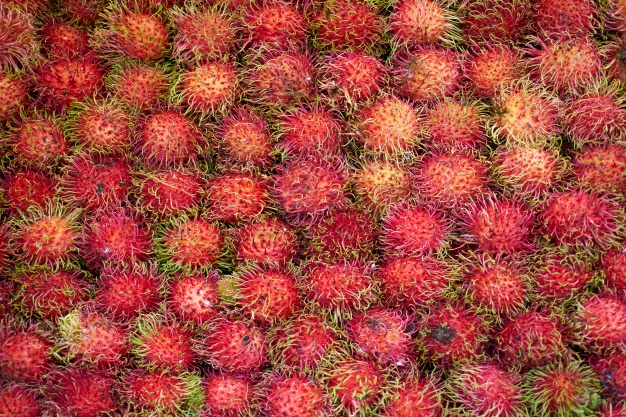
Nutritional profile
- It contains desirable amount of carbohydrate
- It contains fibre too
- It also contains lesser amount of proteins
- It contains negligible amount of fat and it is totally free from cholesterol
- It is rich in moisture
- It is loaded with several vitamins, which include Vitamin A, Vitamin C, Vitamin B1, B3, B6, B9 and B12
- It also contains numerous important trace elements like calcium, phosphorus, sodium, potassium, zinc, magnesium and iron

Biological activity
Antioxidant activity
- It exhibits strong antioxidant activity
- Its polyphenolic component and micronutrient contents are considered as the principal components that exert antioxidant activity
- Its consumption is very much useful for protecting the body from the harmful consequences of free radicals and reactive oxygen species
- It also helps to reduce the susceptibility of developing chronic diseases by decreasing oxidative stress
Anti-carcinogenic activity
- Consumption of rambutan is closely related with decreasing the prevalence of carcinoma
- Its micronutrient contents and antioxidant activity play imperative role in preventing different forms of cancers
- Rambutam peel helps in suppressing the growth of cancerous cell in body and also prevents metastasis
- It is very effective for reducing the prevalence of liver cancer
Antimicrobial activity
- It shows potent antibacterial activity that helps to inhibit the growth and reproduction of various disease causing bacteria within host
- It exerts antiseptic property as well, which helps to protect the body from various infections
- It also helps in rapid wound healing
- It has seen that consumption of rambutan helps in preventing pus formation

Aphrodisiac activity
- It exerts aphrodisiac activity too, which is closely associated with enhancing sexual desire
- It has seen that rambutan leaves are very effective to increase libido by regulating the action of several hormones
Health benefits
Role on immunity
- Consumption of rambutan is extremely helpful for boosting up the overall immunity of body as it greatly supports the immune health
- Its Vitamin C content plays imperative role in promoting long term immune health
- It helps to increase the resistance power of the body as well
Role on digestive health
- Consumption of rambutan is associated with making the digestive tract relatively more resilient
- Its fibre content is accountable for enhancing the overall health and activity of gastrointestinal tract. As it is related with enhancing the growth of intestinal beneficial microbes thus it plays significant role in promoting gut health also. On the other hand it helps to prevent constipation too

Role on skeletal health

- Rambutan is loaded with phosphorus that plays imperative role in promoting skeletal health as phosphorus helps in healthy bone formation
- Its Vitamin C content also promotes skeletal health
- It helps to improve bone mass as well as bone mineral density thus it is better to consume rambutan for maintaining a healthy skeletal system
Role on skin
- It is very effective for improving skin health
- Preparing a paste by mashing the rambutan seed and its application to skin significantly improves the texture of skin. It also helps to clear the skin and improves complexion
- It also helps to make the skin soft and smooth
- It helps to hydrate the skin as well
- Its vitamin C content and magnesium content are responsible for improving skin elasticity as they help to stimulate collagen production
- Its antioxidant activity also plays imperative role in protecting the skin from oxidative damages thus helps to reduce the prevalence of skin disorders as well as aging
Role on hair
- Rambutan contains various nutrients that help to improve hair health
- Its Vitamin C content plays significant role in nourishing the hair as well as the scalp. It helps to increase the shine of the hair as well
- Copper component of rambutan helps to prevent hair loss. It is also associated with intensifying hair colour and plays important role in inhibiting premature graying of hair
- Protein component of rambutan helps to strengthen hair root thus helps to promote hair growth
- Its antimicrobial activity is also linked with treating dandruff and various scalp related issue like itching, dry scalp etc

Role of rambutan on disease prevention
- Its Vitamin A content plays significant role in reducing the risk of developing eye disorders. It also helps to promote vision by protecting the retina from oxidative damages
- It acts as an effective therapeutic substance for treating anemia as it is rich in iron, which helps to enhance the synthesis of hemoglobin
- It helps to decrease the concentration of bad cholesterol (LDL) in body thus it acts as an imperative remedial action for hypercholesterolemia as well as metabolic syndrome
- It hypolipidemic effect and fibre content are responsible for facilitating weight reduction too
- Phosphorus component of rambutan also helps to promote renal function. We know that kidney helps to filter the blood and eliminate waste from our body through urine and this type of process often leaves some residues in kidney. Accumulation of these types of residues may increase the risk of renal failure thus it is better to clean the kidney. It has seen that consumption of rambutan is very effective for cleansing the kidney
- Consumption of rambutan peel extract is very much beneficial for decreasing the concentration of sugar in blood as it has strong anti-diabetic activity. Its consumption significantly improves fasting blood sugar level
- Its high fibre content and hypocholesterolemic activity help to decrease the susceptibility of atherosclerosis and coronary artery disease in many folds thus its consumption is thought to be very effective for decreasing the risk of developing cardio vascular diseases. It helps to prevent hypertension as well
- It is also extensively used as an imperative preventive measure for diarrhoea

General consideration of using Rambutan
- All parts of rambutan can be used for various medicinal purposes
- Rambutan leaves extract can be used for healing pain as it has potent analgesic property
- Rambutan seed can also be consumed as it is a rich source of carbohydrates and proteins. It also exerts antioxidant activity but the seed should not be consumed raw, as raw seed contains saponin, which can affect the health adversely
- Bark of rambutan plant has astringent properties thus it can be used also
- Rambutan peel can be used as well. It contains flavonoids and also exerts anti-carcinogenic, anti-diabetic and anti-inflammatory properties
- It should be stored in refrigerator for enhancing its shelf life
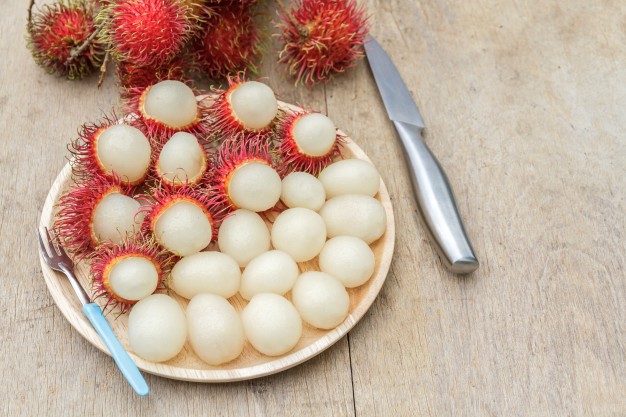
Source:
Akhtar, M.T., Ismail, S.N. and Shaari, K., 2017. Rambutan (Nephelium lappaceum L.). Fruit and Vegetable Phytochemicals: Chemistry and Human Health, 2nd Edition, pp.1227-1234.
Bhat, R., 2020. Bioactive Compounds of Rambutan (Nephelium lappaceum L.). Bioactive Compounds in Underutilized Fruits and Nuts, pp.145-156.
Hernández-Hernández, C., Aguilar, C.N., Rodríguez-Herrera, R., Flores-Gallegos, A.C., Morlett-Chávez, J., Govea-Salas, M. and Ascacio-Valdés, J.A., 2019. Rambutan (Nephelium lappaceum L.): Nutritional and functional properties. Trends in food science & technology, 85, pp.201-210.
Mirghani, M.E.S., 2019. Rambutan (Nephelium lappaceum) fats. In Fruit oils: Chemistry and functionality (pp. 273-280). Springer, Cham.
Palanisamy, U., Manaharan, T., Teng, L.L., Radhakrishnan, A.K., Subramaniam, T. and Masilamani, T., 2011. Rambutan rind in the management of hyperglycemia. Food Research International, 44(7), pp.2278-2282.
Perumal, A., AlSalhi, M.S., Kanakarajan, S., Devanesan, S., Selvaraj, R. and Tamizhazhagan, V., 2021. Phytochemical evaluation and anticancer activity of rambutan (Nephelium lappaceum) fruit endocarp extracts against human hepatocellular carcinoma (HepG-2) cells. Saudi Journal of Biological Sciences, 28(3), pp.1816-1825.
Shahrajabian, M.H., Sun, W., Khoshkharam, M. and Cheng, Q., 2020. Rambutan, a tropical plant with ethno-pharmaceutical properties. Agrociencia, 54(1), pp.121-128.
